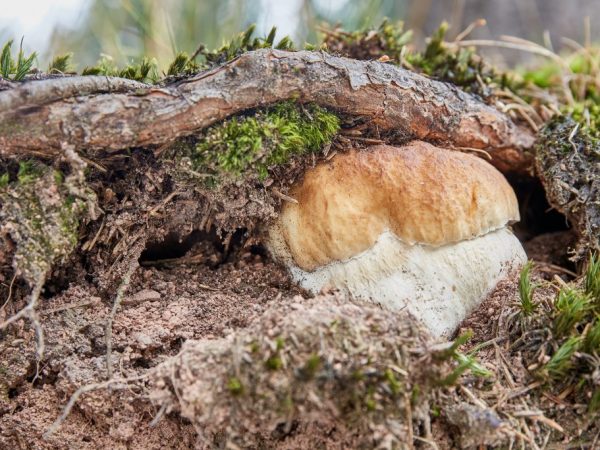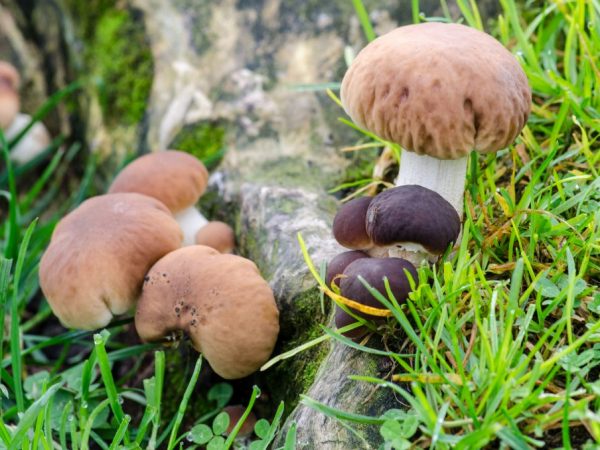Mushroom places of the Chekhov region
Usually, mushrooms in the Chekhov region delight with their abundance, but you need to know where they grow. On weekends, many people like to go to the forest for a "quiet hunt" with the whole family. This is an excellent reason to breathe fresh air and is much better than any fitness: after all, behind each mushroom you need to bend over, sit down and carefully cut off the leg with a sharp knife or gently, with grace, twist it out of the ground.

Mushroom places of the Chekhov region
Varieties of mushrooms
There are many mushroom places in the Moscow region. The most fruitful months for mushrooms are warm August and rainy September. During this period, fans of "mushroom hunting" make excursions and stock up for a whole year.
At this time, in the Moscow region, there are many representatives of edible species:
- boletus;
- aspen mushrooms;
- mushrooms;
- birch trees;
- flywheels.
Since August 15, milk mushrooms, white waves and mushrooms, traditional for these places, grow.
In the fall, they mainly recruit:
- honey agarics;
- milk mushrooms;
- boletus;
- aspen mushrooms.
All specimens are edible and are perfect for pickling, pickling, drying and other culinary delights.
The best places
Those who want to pick mushrooms in this area travel by car, public and other transport along the Simferopol highway towards Chekhov. When it is 50 km from the Moscow Ring Road, turn left. You need to go in the direction of the village of Melikhovo (where a museum with a reserve in memory of A.P. Chekhov is located).
They pass the village of Vaskino, then Melikhovo - and you have to get off. A variety of mushrooms grow near the highway, from all sides, and they will stretch to Talezh (this is a village). Here you can collect honey mushrooms with boletus, boletus and aspen mushrooms. A person fills a medium-sized basket in about an hour.
Some people think that if they do not have their own car, these places cannot be reached, but they are mistaken.
At the Yuzhny M you can take bus # 365. Further from the Kursk railway station to the place get by train.
The next transport is fixed-route taxi №25. It goes all the way to "Unreleased" - this is a partnership of gardeners. You need to go to the stop. "Melikhovo village".
How to look for mushrooms

Mushrooms love moisture
Experienced people know that harvesting should be done a few days after the rain, when it is high humidity and warm outside, especially if it is in July or August.
Irina Selyutina (Biologist):
For many, it will probably turn out to be a discovery that even in the days of the Soviet Union, Candidate of Economic Sciences A.I. Semenov developed a whole scientific system for searching for mushrooms, using for these purposes well-known methods of searching for commercial fish species in the seas and oceans. He suggested splitting the search into:
- preliminary: going into the forest as a preparation for a "quiet hunt", when a person looks at what could have changed, plans his route;
- detailed (actually picking mushrooms): it can be done in the following ways:
- "comb";
- "Comb with a ledge";
- “Wave”, or “zigzag” (best suited if the forest is transparent, that is, there are few trees);
- "Stretched spring principle": applied to inspect the edge of the forest, inspect the space around each tree.
Myceliums grow strongly in the following trees:
- oil;
- oaks;
- pine trees;
- aspens;
- birch.
Mushrooms are also found under mountain ash, with poplars and alders, but less often. Many honey mushrooms are found on old rotten stumps, there are many other species in the forest on rotted leaves, with needles. Morels grow abundantly in unexpected nooks and crannies, for example, on fireplaces. But it is important to be able to distinguish them from morels, tk. in the apothecia of the lines, the toxin gyromitrin is present.
A bountiful harvest should be sought on forest edges, along the roads and paths that go through the forest, on lawns and clearings; you should also look in other places. Where trees and bushes grow too thick or tall grass, it is better not to waste time, there is unlikely to be a bountiful harvest.
In spring, you can walk through the forest, along the roads in search of morels. Many representatives of different types of mushrooms will appear from June to August. They love warmth, but when frost hits in the fall, their abundant growth stops. You can already find some mushrooms.
Winter mushrooms are found even in November, when it is rather cold. It is no longer possible to confuse them with other, often poisonous species at this time. Not everyone knows, but until December, delicious purple rows and oily colibia grow. Here's what you can collect within the area throughout the year.
Irina Selyutina (Biologist):
Pro mushroom pickers know what kind of mushrooms they came to the forest for. Therefore, they adhere to the following points in their quest:
- in wet weather, mushrooms are looked for in drier places (hills, which even warm up well in wet weather);
- in dry weather, it is better to look in the shade of trees and where moisture remains;
- mushrooms like to settle where there are fewer tree trunks: in clearings, forest edges;
- russula, moss, white, boletus live in the pine forest;
- in the spruce forest you can also find mushrooms and chanterelles;
- floodplain forests: this is for lovers of morels and stitches;
- the meadows and pastures provide ideal conditions for the development of mushrooms.
Whichever route is chosen, you need to move slowly, carefully look around. If you have already found one mushroom, then it is better to sit down next to it and look at the clearing from a different angle - mushrooms grow in "families" and such a change in the angle and field of view will help you find all the representatives of the colony.
Tips from mushroom pickers
The forest near Moscow cannot be compared with the taiga, but even a beginner can get lost in it. Therefore, when collecting, you need to follow the safety rules and follow the mushroom map of the Chekhov region.
Mushrooms are collected in any container: buckets, baskets made of vines, plastic and other materials. Experienced mushroom pickers take backpacks in which it is very convenient to carry prey.
Do not forget that the fungi cannot be pulled out with the mycelium adjacent to it - this damages the adjacent mycelium. The leg near the ground is carefully trimmed with a knife. Some people gently tear it off with their hands and believe that the remainder will go to slugs with worms and this is a more environmentally friendly way of collecting.
If somewhere along the way you come across a fly agaric, you can be sure that the place is ecologically clean and, in addition to poisonous, there are many edibles growing nearby.



